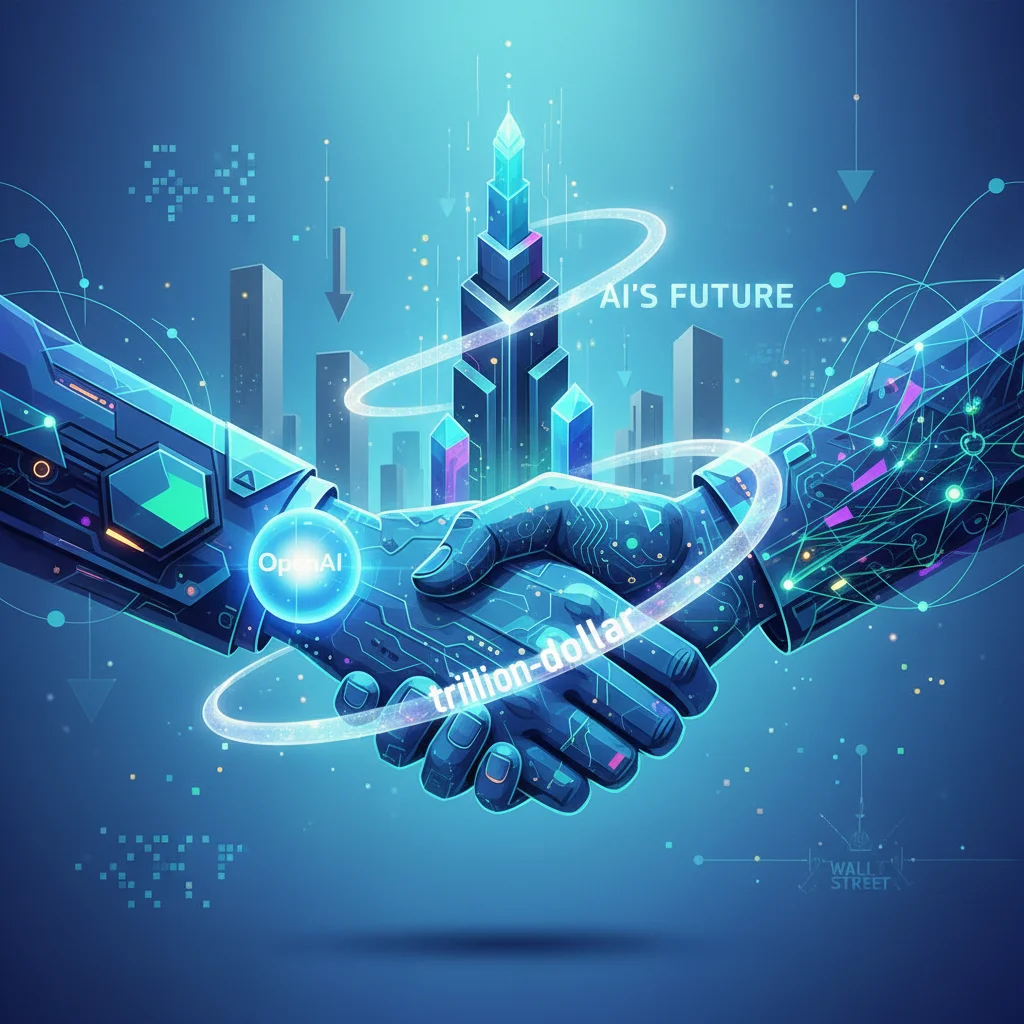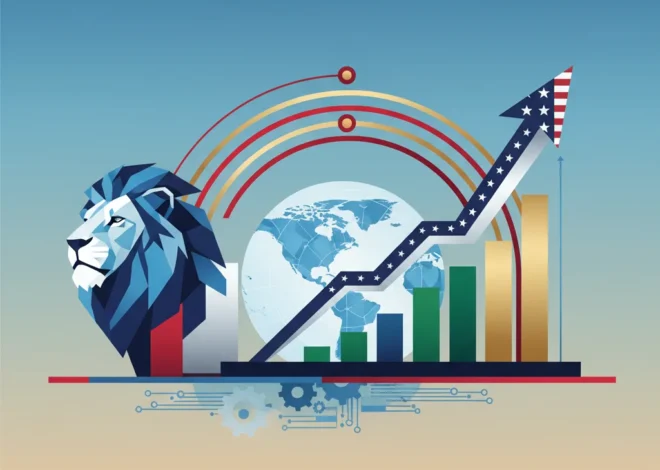
The Trillion-Dollar Handshake: Inside OpenAI’s Secretive Plan to Build AI’s Future Without Wall Street
Imagine you need to build something so monumental it will redefine the global economy. We’re not talking about a new app or a faster computer. We’re talking about the physical foundation for artificial general intelligence (AGI)—a sprawling, global network of factories, data centers, and power plants. Now, imagine you need to secure funding and partnerships for this venture, with a price tag that could soar into the trillions. What’s your first call? Goldman Sachs? JPMorgan?
If you’re Sam Altman, the answer is apparently “neither.”
In a move that has the worlds of finance and technology buzzing, OpenAI is reportedly sidestepping the traditional army of Wall Street bankers and high-priced lawyers to orchestrate its future. Instead of relying on outside advisers, Altman is tapping a small, trusted circle of in-house dealmakers to assemble a staggering web of infrastructure agreements. We’re talking about deals potentially worth $1.5 trillion or more, all designed to secure one thing: the global supply chain for the future of artificial intelligence.
This isn’t just a cost-saving measure; it’s a radical rethinking of how foundational technology is built. It’s a strategy that’s as audacious and potentially disruptive as the AI models OpenAI is famous for. So, why is OpenAI ditching the pinstriped suits of Wall Street? What does this renegade approach tell us about the future of AI, innovation, and the very nature of building a company in the 21st century?
Let’s dive in.
The Old Playbook vs. OpenAI’s New Game
For decades, the path for any company making a massive, multi-billion-dollar move was clear. You hire an investment bank. Their teams of analysts build complex financial models, their senior partners leverage their Rolodexes, and their lawyers pour over every clause of every document. It’s a meticulous, time-consuming, and incredibly expensive process designed to minimize risk and satisfy shareholders.
OpenAI is throwing that playbook out the window. The company’s approach is being run not by a legion of bankers, but by a tight-knit internal team, including CEO Sam Altman and COO Brad Lightcap. They are personally spearheading discussions with sovereign wealth funds, chip manufacturers, and energy providers to construct what the Financial Times calls a “huge web of infrastructure agreements” (source). This isn’t one single deal; it’s a complex network of interlocking partnerships designed to solve the biggest bottlenecks facing the AI industry: a shortage of specialized chips, a lack of data center capacity, and an insatiable need for energy.
Why the unconventional approach? The reasons are a masterclass in modern corporate strategy.
- Unprecedented Speed: The AI race is being run at a blistering pace. The time it takes to develop a new state-of-the-art machine learning model is shrinking from years to months. Traditional deal-making, with its months of due diligence and negotiations, is simply too slow. Altman’s strategy prioritizes agility, allowing OpenAI to move at the speed of technological discovery, not the speed of banking.
- Deep Technical Complexity: How do you value a 20-year partnership for a new type of AI chip that doesn’t exist yet? What’s the ROI on a novel data center cooling system? These aren’t standard M&A questions. The deals OpenAI is structuring are deeply technical. An in-house team, steeped in the company’s long-term vision and technical roadmap, is arguably better equipped to navigate these complexities than an external banker who is an expert in finance but not in foundational AI infrastructure.
- Secrecy and Strategic Advantage: In the high-stakes world of AI, your long-term infrastructure plan is your most valuable secret. Bringing in large teams of external advisers dramatically increases the risk of leaks. By keeping the circle small, OpenAI protects its strategic roadmap from competitors. This level of operational cybersecurity—protecting intellectual property and strategy—is paramount when the goal is AGI.
This strategy is about more than just building data centers; it’s a bid for vertical integration on a scale never seen before in the world of software. OpenAI isn’t just creating the AI; it’s attempting to own the entire stack, from the silicon in the chips to the electricity that powers them.
Blackstone's Billion-Dollar AI Warning: Is Wall Street Asleep at the Wheel?
The big question, however, is whether this approach conflates brilliance with recklessness. The very purpose of outside advisers is to provide a sober second opinion, to spot the unseen risks, and to question the assumptions of the visionaries. Without that external pressure testing, the risk of “groupthink” inside a small, homogenous team is immense. OpenAI is betting that its internal expertise outweighs the benefits of external validation. It’s a gamble that will either be hailed as a stroke of genius or studied as a cautionary tale for generations of startups to come.
The Global Chessboard: Assembling the Pieces for AI Dominance
So, who is on the other side of the table in these clandestine negotiations? The list of potential partners reads like a who’s who of global power in technology and finance. Each player brings a critical piece to Altman’s grand puzzle.
Here’s a breakdown of the key players and their potential roles in OpenAI’s ambitious ecosystem:
| Player/Entity | Role in OpenAI’s Vision | Potential Contribution & Significance |
|---|---|---|
| Microsoft | Primary Cloud & Financial Partner | Already a major investor, Microsoft provides the foundational cloud infrastructure (Azure) that powers OpenAI’s models. Their continued partnership is crucial for both capital and computational resources. |
| G42 (UAE) | Sovereign Capital & Regional Influence | An Abu Dhabi-based AI company, G42 represents a massive source of sovereign wealth funding. A partnership would provide immense capital and establish a strategic foothold in the Middle East’s growing tech hub (source). |
| TSMC (Taiwan) | Chip Manufacturing Powerhouse | As the world’s leading semiconductor manufacturer, Taiwan Semiconductor Manufacturing Company is essential for producing the next generation of advanced AI chips that OpenAI needs to design. |
| Masayoshi Son (SoftBank) | Visionary Tech Investor | The founder of SoftBank has a long history of making huge, bold bets on future technologies. His involvement would bring not just capital but also a strategic vision aligned with long-term, transformative goals. |
| Energy Providers | The Power Source | An often-overlooked piece of the puzzle. The computational demands of AGI will require unimaginable amounts of electricity. OpenAI is reportedly exploring partnerships with energy producers to secure clean, stable power for its future data centers. |
This is not just a series of business deals; it’s geopolitics. Weaving together entities from the United States, the UAE, Taiwan, and Japan creates a complex web of international dependencies and risks, all in the pursuit of technological supremacy.
Apple's 0M Checkered Flag: How AI and Cloud are Fueling the Trillion-Dollar Race for Live Sports
The Trillion-Dollar Question: Bold Vision or Unchecked Hubris?
The rewards for successfully executing this strategy are almost beyond comprehension. If OpenAI can secure its own supply chain, it could create an insurmountable moat around its technology. It would control the foundational infrastructure of the next technological era, making its platform the essential utility for a future driven by automation and intelligent SaaS products. For developers and entrepreneurs, building on OpenAI’s platform would be the equivalent of building on the internet today.
But the risks are just as monumental.
- Execution Risk: Can a small internal team, no matter how brilliant, effectively manage the legal, financial, and geopolitical complexity of a multi-trillion-dollar global supply chain? The potential for a catastrophic misstep is enormous.
- Financial Risk: These are not just financial commitments; they are long-term, illiquid investments in factories and power plants. If the timeline to AGI is longer than anticipated, or if a breakthrough in programming or hardware makes the chosen path obsolete, the financial fallout could be devastating.
- Geopolitical Risk: Building a critical supply chain that depends on cooperation between the US, the Middle East, and Taiwan is a high-wire act. A single political flare-up could bring the entire strategy crashing down.
This is the ultimate high-stakes gamble. Sam Altman is betting that the only way to build the future is to break all the rules of the past. He’s betting that in the race for AI, the slow and steady approach of the old guard is a recipe for irrelevance.
The TikTok Code: How an AI Startup Outsmarted the World
The Future is Negotiated in Secret
The story of OpenAI’s deal-making is more than just a business curiosity. It’s a window into the mindset driving the AI revolution. It reveals a belief that the future of artificial intelligence is too important to be built by committee or bogged down by conventional processes.
Whether this strategy is the blueprint for the next generation of transformative companies or a cautionary tale of ambition flying too close to the sun remains to be seen. But one thing is certain: the future of technology is not being decided in the boardrooms of Wall Street. It’s being negotiated in quiet, secret conversations by a handful of visionaries who believe they hold the keys to the next chapter of human history.


